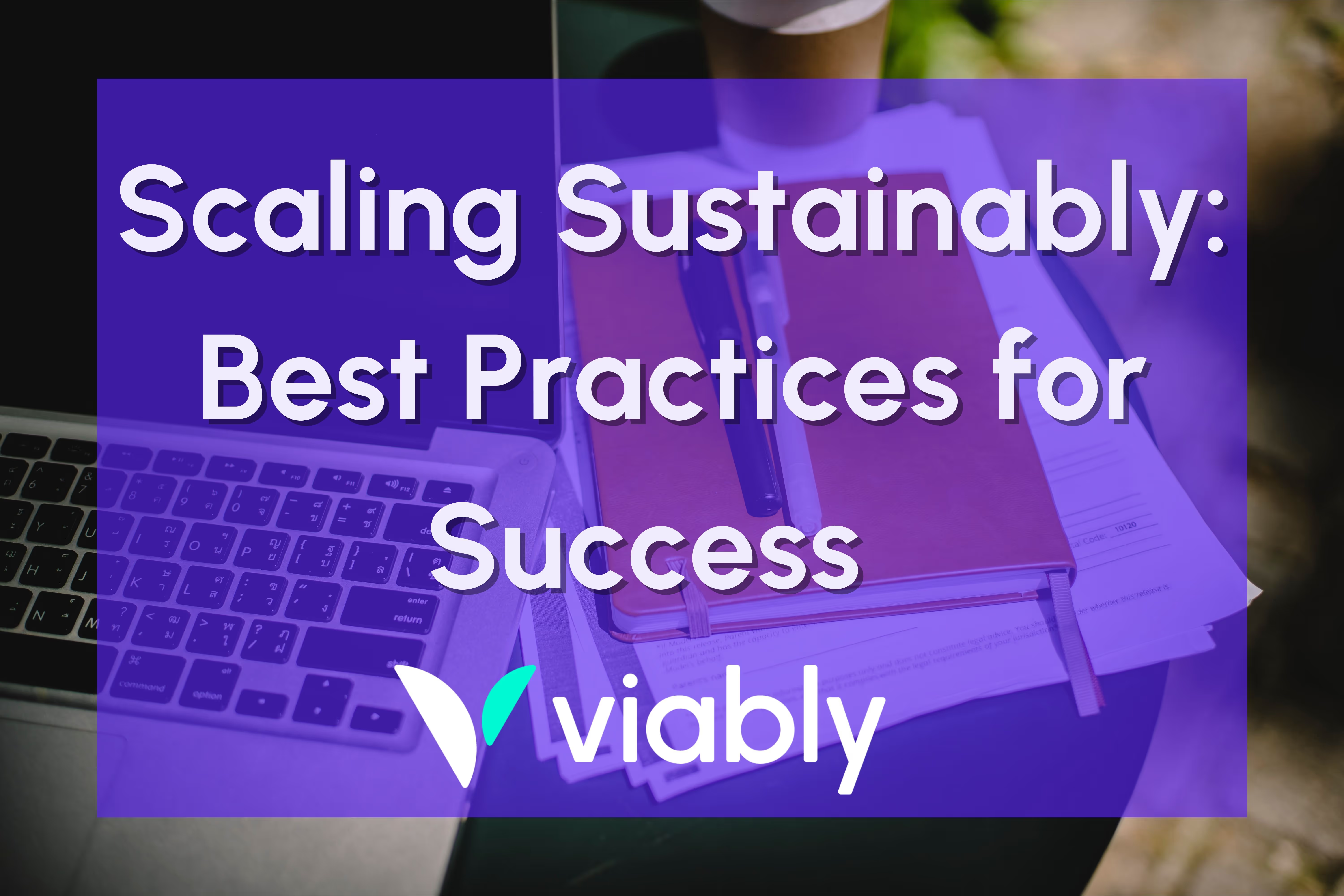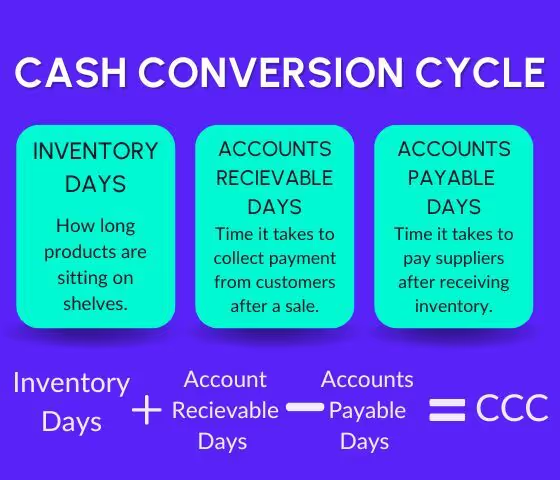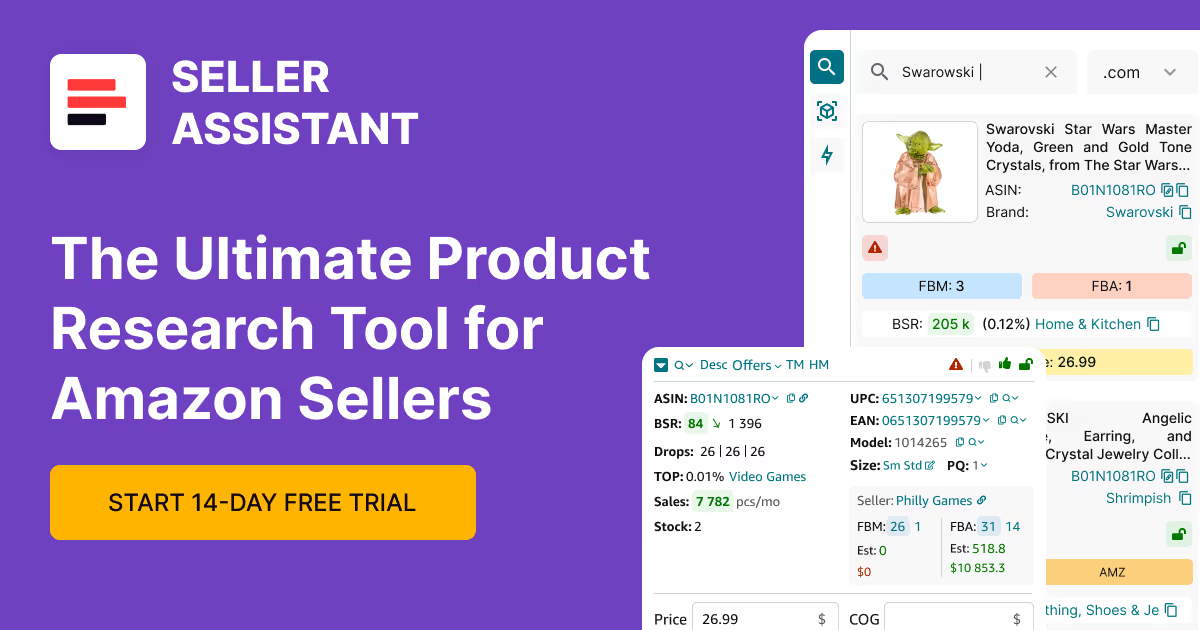Scaling Sustainably: Best Practices for Success
Download Amazon Seller Guide
This guide will help you get started, understand the basics of Amazon selling, and explain in simple words how it all works.

Now that you’ve established a foundation of healthy cash flow for your ecommerce business, it’s time to start scaling. While some Amazon sellers may have a strategic roadmap for growth laid out, others are focused on what’s immediately in front of them. Regardless of how you’ve been operating your business thus far, it’s important to maintain a healthy balance between these two mindsets: you need clear goals and milestones for success, but you can’t be so rigid in your planning that it detracts from your ability to remain agile. The best sellers will be able to ensure consistent growth by taking advantage of a variety of opportunities to achieve goals that align with their business’ values.
In our previous blog, we discussed the importance of personalized funding to optimize success and streamline your cash flow. With your newfound confidence in cash conversion cycles and a solid understanding of the unique financial options available to your business, now we’ll explore what it means to scale your Amazon business sustainably. Although it may seem like the more money in your bank account, the better, that’s not always the case. In this blog we’ll define what it means to scale sustainably as an Amazon seller, along with providing key strategies to do so.

What does it mean to scale sustainably?
While it’s always nice to have access to greater working capital than less, it’s more important that your money is always working for you. Instead of letting excess funding just sit in a bank account, it’s critical that you put those dollars to work in order to see a strong return on investment. At the same time, you don’t want your Amazon business to become dependent on those external funds. To truly make the most of each dollar you need to grow strategically and at a pace that can provide long standing success for your business.
This raises the question, what makes scaling sustainably different?
Well, in order to scale sustainably Amazon sellers need to shift their mindset away from “How much funding does my business qualify for?” to “How much funding can my business handle?”. This is unique because many Amazon sellers are focused on growing as fast as possible, and therefore are looking for the largest sum of working capital available to them as soon as possible.
While these two questions may seem like a subtle shift in language, the adjustment prioritizes steady, controlled growth over rapid and unpredictable changes in sales and revenue. By scaling your business at a well monitored, consistent pace you’ll be able to better ensure that any rise in sales or revenue will endure. Additionally, taking a more measured approach to growth will help you to streamline your cash conversion cycle and avoid facing those pesky cash flow hiccups.
Best practices for sustainable growth
In order to begin scaling your ecommerce business sustainably, you’ll need to pay attention to how you allocate any capital that comes in, especially external funding. Each Amazon business is different, so it’s important that you, as the business owner, invest wisely in the opportunities that best suit your business. As a result, there’s not always a uniform path to sustainable growth, however, we recommend that you adopt these practices to ensure the best results.

Plan to Allocate Every Dollar
Too often sellers take on funding without a clear plan and purpose for their new capital. This can lead to overspending or, worse, underspending.
When you overspend in the wrong areas, it ultimately produces a financially unstable momentum that can’t be well regulated. Think about what would happen if you invested in a new marketplace but couldn’t keep up with all the new demand that it produces long-term. While it might initially generate new sales and revenue, eventually you’re going to need a more holistic approach to that type of expansion.
When you underspend for your Amazon business, you’ll end up with external funding that just sits, unused, in a bank account. At best this money is doing nothing for your business, but more likely it’s accruing interest that will need to be paid back. At that point the capital is yielding a negative ROI.
To avoid both of these outcomes, it’s important that you allocate every dollar of external working capital to a well thought out purpose. This could be increased inventory purchases, a new marketing campaign, or strategic expansion into a new marketplace. Sustainable growth accounts for all your money, ensuring that it’s put to good use, consistently.
Track Your ROI for Funding
Following that line of thought, another wise practice for scaling sustainably with funding is to keep an eye on your ROI. By periodically monitoring your return on investment, you’ll be able to guarantee that each dollar spent is being put to good use and producing even more. The best way to do this is to track your cash flow over time to visualize that steady growth.
Schedule Funding Rounds Strategically
In the same way that taking on as much funding as possible isn’t always the best practice, taking on funding as frequently as possible isn’t wise. On top of that, there is a right and wrong time to take on funding. The best Amazon sellers understand that they should align funding cycles with their cash conversion cycles to improve buying power and get that extra cash flow boost that can help them truly scale.
Smart scheduling for funding will also help to ensure that your funding is optimized for sustainable growth. For the most part, you should pay off one round of funding before taking on the next to keep from accruing too many fees or high interest rates at one time. By thinking strategically about when (and how much) funding you take, you’ll be able to streamline cash flow without relying on external funding for success.
Find the best Partners for your Business
As we’ve discussed previously, not all funding providers are created equally. That means it’s critical that you find a funding provider that’s interested in improving the health and agility of your Amazon business. When you’re researching ecommerce funding options, consider what each provider's terms, potential offers, and strategies are for Amazon sellers. It’s also important to take into consideration what value add-ons they can provide for your business to help improve cash flow, financial literacy, and more, since all of these factors play a role in sustainable growth.
Remember that although many funding providers will try to give you as much capital as possible, that does not mean that you need that much for your business. Oftentimes a more conservative first round of funding will help you begin to steadily build toward the growth rate of your dreams. That’s why individualized funding, from people-first working capital providers, like Viably, are solid solutions. Personalized funding ensures that a company’s underwriting team has taken the time to review your business history, and offer an amount that will help you grow sustainably.
Final Thoughts
By taking thoughtful and measured steps to scale your business sustainably through ecommerce funding, you can ensure that growth is enduring. Once you’ve allocated and planned for every dollar, tracked return on investment, and scheduled funding strategically with partners that you trust, you’ll be able to increase cash flow and sales with confidence–building your business on a solid foundation.
While it’s critical to have enough working capital on hand to remain flexible and agile, it’s also important to have a safety net, should you ever need it. In our next blog, we’ll discuss the importance of building up an Emergency fund, as well as a “Sleep Well at Night” reserve with external funding. We’ll also identify tips on how to do so without interrupting your present cash flow.

.svg)













